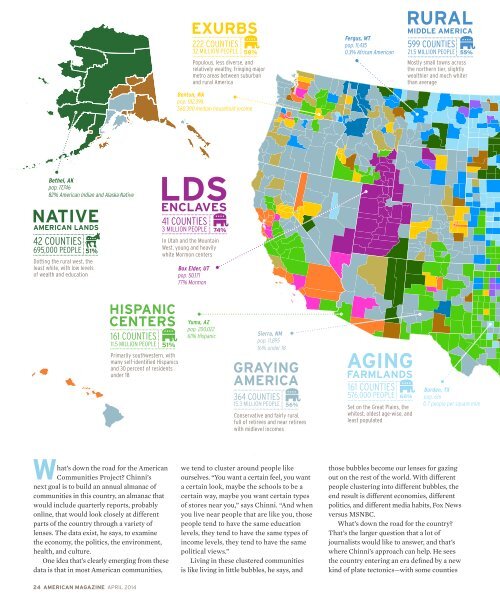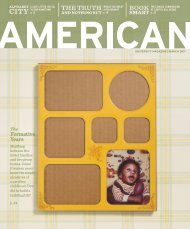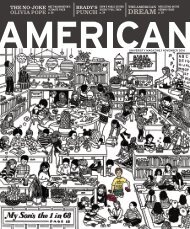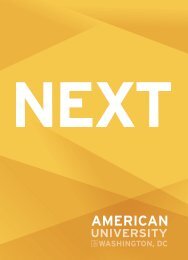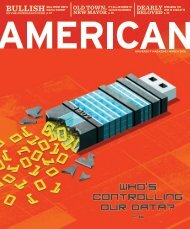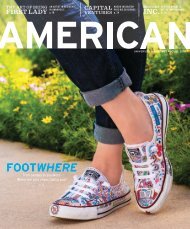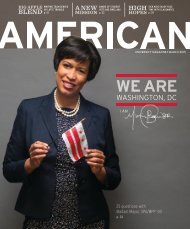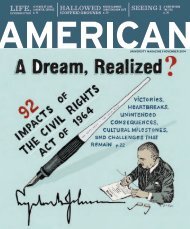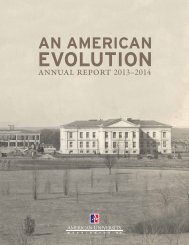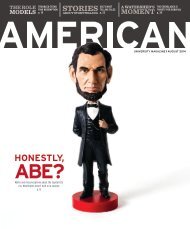American Magazine April 2014
American University is located in Washington, D.C., at the top of Embassy Row. Chartered by Congress in 1893 to serve the public interest and build the nation, the university educates active citizens who apply knowledge to the most pressing concerns facing the nation and world. Students engage with leading faculty experts and world leaders, learning how to create change and address issues including the global economic crisis, health care, human rights and justice, diversity, the environment and sustainability, immigration, journalism’s transformation, corporate governance, and governmental reform.
American University is located in Washington, D.C., at the top of Embassy Row. Chartered by Congress in 1893 to serve the public interest and build the nation, the university educates active citizens who apply knowledge to the most pressing concerns facing the nation and world.
Students engage with leading faculty experts and world leaders, learning how to create change and address issues including the global economic crisis, health care, human rights and justice, diversity, the environment and sustainability, immigration, journalism’s transformation, corporate governance, and governmental reform.
Create successful ePaper yourself
Turn your PDF publications into a flip-book with our unique Google optimized e-Paper software.
Populous, less diverse, and<br />
relatively wealthy, fringing major<br />
metro areas between suburban<br />
and rural America<br />
Benton, WA<br />
pop. 182,398<br />
$60,300 median household income<br />
Fergus, MT<br />
pop. 11,435<br />
0.3% African <strong>American</strong><br />
Mostly small towns across<br />
the northern tier, slightly<br />
wealthier and much whiter<br />
than average<br />
Bethel, AK<br />
pop. 17,746<br />
82% <strong>American</strong> Indian and Alaska Native<br />
Dotting the rural west, the<br />
least white, with low levels<br />
of wealth and education<br />
In Utah and the Mountain<br />
West, young and heavily<br />
white Mormon centers<br />
Box Elder, UT<br />
pop. 50,171<br />
77% Mormon<br />
Primarily southwestern, with<br />
many self-identified Hispanics<br />
and 30 percent of residents<br />
under 18<br />
Yuma, AZ<br />
pop. 200,022<br />
61% Hispanic<br />
Sierra, NM<br />
pop. 11,895<br />
16% under 18<br />
Conservative and fairly rural,<br />
full of retirees and near retirees<br />
with midlevel incomes<br />
Set on the Great Plains, the<br />
whitest, oldest age-wise, and<br />
least populated<br />
Borden, TX<br />
pop. 616<br />
0.7 people per square mile<br />
What’s down the road for the <strong>American</strong><br />
Communities Project? Chinni’s<br />
next goal is to build an annual almanac of<br />
communities in this country, an almanac that<br />
would include quarterly reports, probably<br />
online, that would look closely at different<br />
parts of the country through a variety of<br />
lenses. The data exist, he says, to examine<br />
the economy, the politics, the environment,<br />
health, and culture.<br />
One idea that’s clearly emerging from these<br />
data is that in most <strong>American</strong> communities,<br />
we tend to cluster around people like<br />
ourselves. “You want a certain feel, you want<br />
a certain look, maybe the schools to be a<br />
certain way, maybe you want certain types<br />
of stores near you,” says Chinni. “And when<br />
you live near people that are like you, those<br />
people tend to have the same education<br />
levels, they tend to have the same types of<br />
income levels, they tend to have the same<br />
political views.”<br />
Living in these clustered communities<br />
is like living in little bubbles, he says, and<br />
those bubbles become our lenses for gazing<br />
out on the rest of the world. With different<br />
people clustering into different bubbles, the<br />
end result is different economies, different<br />
politics, and different media habits, Fox News<br />
versus MSNBC.<br />
What’s down the road for the country?<br />
That’s the larger question that a lot of<br />
journalists would like to answer, and that’s<br />
where Chinni’s approach can help. He sees<br />
the country entering an era defined by a new<br />
kind of plate tectonics—with some counties<br />
24 AMERICAN MAGAZINE APRIL <strong>2014</strong>


